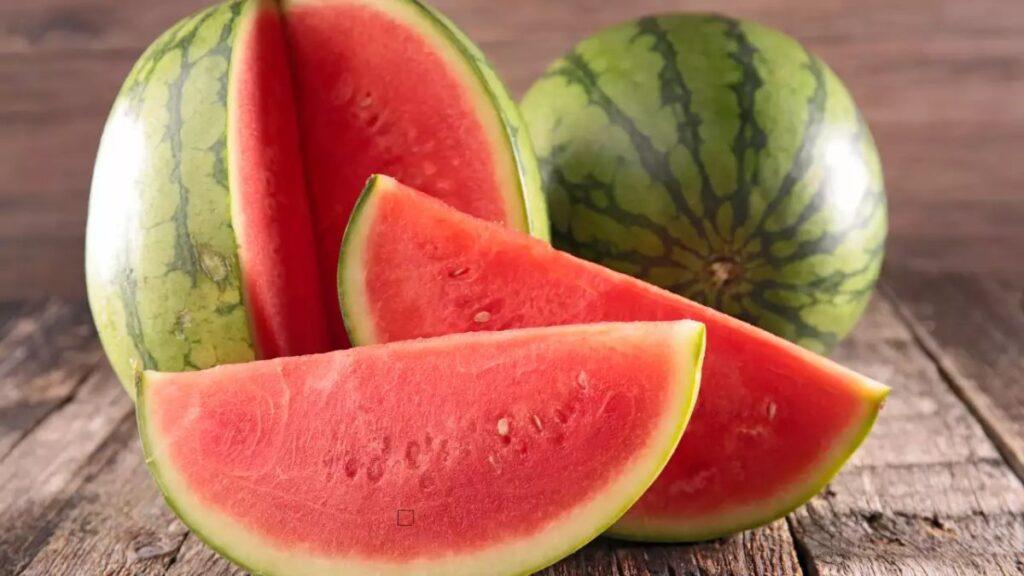Adulterated Watermelons: Harmful effects, signs of adulteration and how to avoid

The summer season brings scorching heat, sweat, and humidity, but thank God for the gift of mangoes and melons, which quench our thirst and replenish our energy. What if we told you that the summer fruits you’re eating could be contaminated?
Mangoes are known to be adulterated with carbide to help them ripen faster, but did you know that artificial food coloring and sweeteners are used to sweeten watermelon and give it that beautiful red hue?
While scrolling through Instagram, you’ll come across videos revealing this shady practice of injecting chemicals to extend shelf life and increase sweetness. These videos also show how to identify a pristine, chemical-free watermelon among a sea of adulterated ones.
Chemically injected watermelons have been a concern due to the potential health risks associated with consuming artificially enhanced fruits. These chemicals are frequently injected to accelerate growth, improve colour, or add sweetness. It can occasionally pose health risks if not checked.
Deepali Sharma, clinical nutritionist at CK Birla Hospital in Delhi, says that sellers are increasingly injecting watermelons with chemicals and colors such as Erythrosine-B (Red-B) to enhance the bright red hue of the pulp, increase shelf life, and improve sweetness. This practice also contributes to meeting the high demand for watermelons during the summer season.
The Adverse Effect of Adulterated Watermelons
According to Kanika Malhotra, a clinical dietician in Delhi, “Calcium carbide, a common chemical used for artificially ripening fruits, produces acetylene gas that mimics the natural ripening process and can have negative health effects. The acetylene gas produced by calcium carbide contains hazardous substances such as phosphorous hydride and arsenic, which can cause nausea, weakness, skin ulcers, and neurological problems such as headaches and memory loss.”
“Chemically injected watermelons can cause food poisoning and, with long-term consumption, may adversely affect liver and kidney function,” Sharma continues.
Signs of Adulteration in Watermelons
This is where things become a little tricky. We know what happens when we eat adulterated watermelons, but how do we know if they’ve been tampered with? Here’s a few solutions:
- To identify chemically injected watermelons, consumers should avoid fruits that appear overly vibrant or unnaturally ripe.
- A perfectly red watermelon, especially one with no color variations, could be suspect.
- If the watermelon feels soft in one spot but firm in another, it may have been tampered with.
- Watermelons injected with chemicals may have unusual cracks on the rind.
- It is advised not to rely solely on the fruit’s appearance and to buy from reputable vendors who sell organic products.
- Peeling fruits and thoroughly washing them can also help reduce the risk of eating chemically treated watermelons.
What FSSAI says
The Food Safety and Standards Authority of India (FSSAI) recommends a simple test to determine whether a watermelon has been adulterated with Erythrosine-B (a chemical dye). They even posted a video on how to do it:
- Slice the watermelon in half to expose the pulp.
- Apply a clean cotton ball to the pulp of the watermelon.
- If the cotton ball turns red, it means the watermelon contains erythrosine or another chemical dye, indicating that it is likely adulterated.
How to Avoid Adulterated Watermelons
When purchasing watermelons, Malhotra recommends the following precautions to avoid chemically treated ones:
- Buy from known vendors: Look for vendors who prioritise fresh produce and with whom you have prior experience. They can tell you about their source.
- Visual inspection: Choose watermelons with a natural appearance and consistent firmness.
- The thump test: Gently thumping a ripe watermelon produces a deep, hollow sound.
- Check the green spot: Look for a creamy yellow or orange spot on the watermelon’s underside. This is the “field spot” where the melon rested on the vine to ripen. A white or absent spot may indicate premature picking.
Watermelons are a great way to beat the summer heat, but make sure it doesn’t come at the expense of your health.






